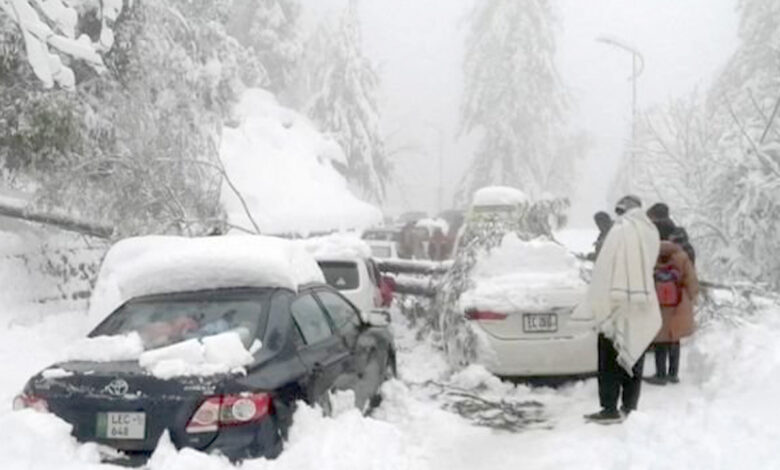In the midst of a snowstorm warning, the Murree administration is planning a strategy.

After over two dozen lives were lost in the hill station last week, Rawalpindi district officials have devised a strategy to deal with any unplanned catastrophes that may occur during the forthcoming rainy and winter period in Murree.
According to a news release released on Friday, Deputy Commissioner Muhammad Ali announced that a contingency plan has been finalised in case of any unforeseen situations while presiding over a meeting to assess the preparations.
Despite the fact that natural catastrophes are beyond our control, he believes that by employing disaster management methods, we may limit the rate of damage.
During the snowstorm, two control rooms will be built and staffed 24 hours a day to listen to citizen concerns and guarantee that they receive the required help as well as detailed counselling.
The control room will be built in the Rawalpindi Deputy Commissioner’s Office as well as the Murree Assistant Commissioner’s Office.
At the nerve centre, focal personnel from all relevant departments will perform their jobs.
In the new approach, snow removal and traffic control have been prioritised. Furthermore, admission into Murree will be severely limited at this time, with no more than 8,000 cars admitted.
It is worth noting that a terrible snowfall created devastation and killed more than 20 people in Murree last week.
A committee has been created to investigate the Murree disaster.
A commission to investigate the Murree disaster was formed earlier this week, with Chief Minister Punjab Usman Buzdar promising “impartial punishment” against anybody found to be incompetent in their responsibilities.
The committee was entrusted with determining which government departments were to blame for the crisis that erupted in Murree.
The committee was constituted to evaluate the steps taken to restrict the flood of people and cars.
Furthermore, the committee intended to investigate what preventative actions institutions took in response to the Met Office’s weather alert.
It was also to see if a warning was issued in the media to discourage people from visiting the tourist spot.
The traffic control measures undertaken during the snowfall and after reports of bad weather conditions were received, as well as the safety measures adopted, were all to be evaluated by the committee and presented in report form within seven days.





